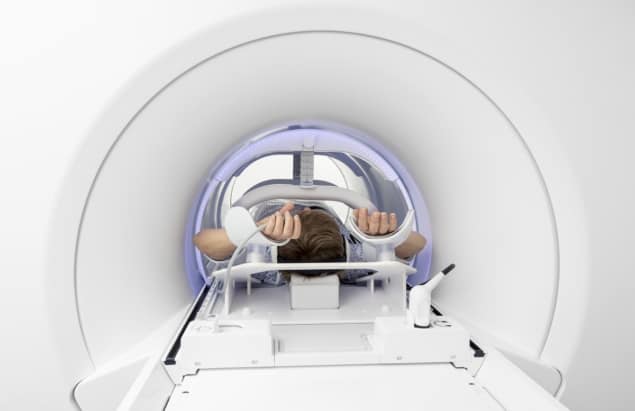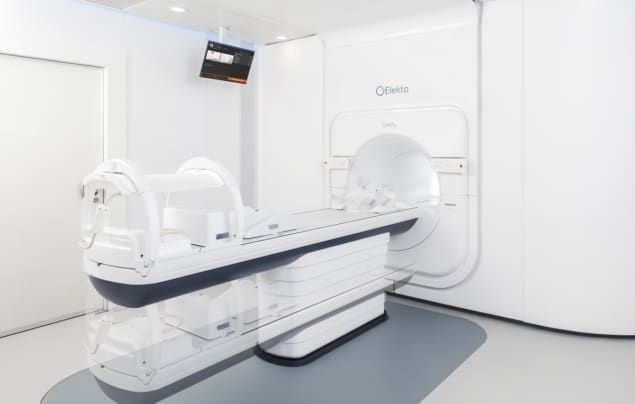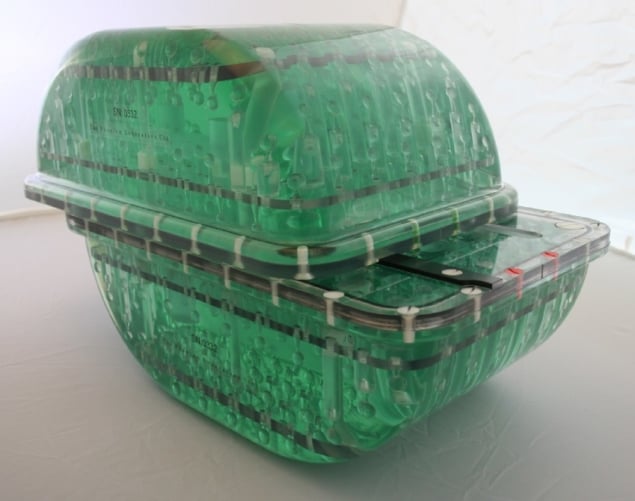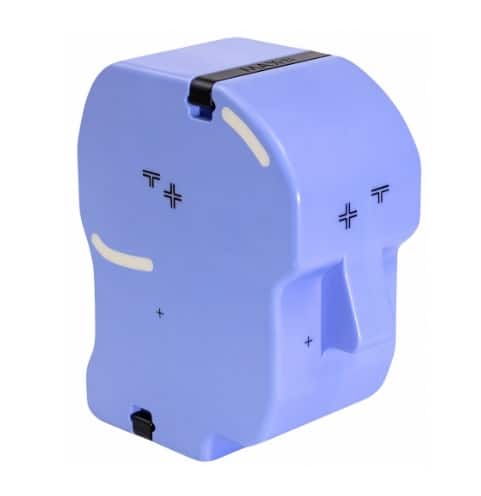
Medical physicists will be gathering in San Antonio, Texas, later this week for the Annual Meeting of the American Association of Physicists in Medicine (AAPM). According to AAPM president Cynthia McCollough, director of the CT Clinical Innovation Center at the Mayo Clinic, this year’s programme promises symposia, courses and workshops that span the range of medical physics topics, with this year’s theme being “Building Bridges, Cultivating Safety, Growing Value”.
“Come and build lasting partnerships with colleagues and vendors, learn how to cultivate a safety culture, and increase your value to those you work with and to the patients we serve,” says McCullough. “The technical exhibit also provides the perfect opportunity to connect with vendors, learn about new products and services, and seek technical support.”
Our medical physics editor Tami Freeman will be in San Antonio to report from the event, but in the meantime here’s a sneak preview of some of the technical innovations that leading vendors will be featuring in the exhibit.
Elekta to focus on magnetic-resonance radiation therapy
Elekta will be demonstrating its latest innovations in precision radiation medicine and has provided an online tool for attendees to pre-book a demonstration. Most attention is likely to focus on the company’s Unity MR-linac, which has been available for clinical use in the United States and Europe since last year. Elekta Unity offers real-time, high-resolution anatomical and biological MRI at the point-of-care, setting a new standard for personalized radiation therapy. With the potential to preserve more healthy tissue, the system extends the capabilities of radiation therapy for hard-to-treat cancers, and allows clinicians to assess tumour responses early in treatment.

Among the other products available for demonstration are the company’s QA systems; the Monaco HD treatment-planning system; Leksell GammaPlan treatment planning and management software; Oncentra Brachy comprehensive brachytherapy treatment planning software; and MOSAIQ Plaza, Elekta’s newest software solution for the delivery of complex radiation treatment. You can also register for a Physics User Meeting on 13 July and a Lunch Symposium on 15 July.
Visit Elekta at booth #216 and pre-book a product demonstration via the company website.
Varian breaks new ground in stereotactic radiosurgery solutions
Several years of collaborative development between Varian and its clinical partners has resulted in HyperArc, a high-definition radiotherapy system that represents a significant step forward for linac-based radiosurgery.

HyperArc provides an intracranial radiosurgery solution that harnesses the power of Varian’s TrueBeam and Eclipse platforms, and combines it with the expertise of leading practitioners in the field. The result is a streamlined, end-to-end solution that can extend the benefits of radiosurgery to many more patients and that can be adopted by clinics worldwide.
SRS-specific optimization tools have been developed to optimize not only dose, but also treatment delivery. Dedicated algorithms ensure efficient workflow and automation, and new ways of looking at multiple targets simultaneously have been introduced to reduce the complexity of the planning process.
“Brain metastases are one of the most commonly diagnosed recurrences for cancer patients and HyperArc puts world-class expert planning and delivers capability directly in the clinic alongside clinicians globally,” commented Chris Toth, President of Varian Oncology Systems.
Find out more by visiting Varian at booth #81
Phantom exploits spherical design to deliver precision measurement
The Magphan series of phantoms from Image Owl makes it possible to precisely evaluate the performance of magnetic-resonance imaging (MRI) systems and correct for any distortion in the images. Magphan models exploit test objects developed from more than a decade of scientific investigation and field experience, with different designs available for specific applications.

The Magphan RT, for example, offers an integrated phantom and analysis system for MRI quality assurance in radiotherapy, using arrays of precisely located spheres to provide an accurate and detailed 3D map of image distortion. The S162 model is optimized for applications where MRI scanners are used for quantitative imaging, particularly in cases where geometric distortion can have a critical impact, while the EMR051 and the smaller EMR121 phantoms are suitable for neuroimaging and for measuring distortion in radiation therapy planning and guidance scanners. An automated analysis service tracks key parameters, and saves results in a cloud-based database for longitudinal studies, process control, and inter-machine comparisons
Discuss your QA requirements with Image Owl at booth #526
Radiation oncology for the next generation
A new portfolio of radiation oncology solutions from Philips Healthcare promises to deliver increased accuracy and reduced time to treatment. The company says that its latest imaging platforms, which include Big Bore RT and the Ingenia MR-RT Ambition/Elition, offer better clinical accuracy and more flexible configuration options, while its Pinnacle Evolution treatment planning system speeds up the optimization process to help streamline the clinical workflow.

AAPM delegates can attend two Philips “Partners in Solutions” presentations. Michael Meltsner, a senior clinical research scientist, will speak at 1.30pm on Monday 15 July, and will explain what makes the Pinnacle scripting interface so powerful and comprehensive, and will introduce the Pinnacle architecture and show how users can communicate with its core code.
In the second presentation, which takes place at 10.00am on Tuesday 16 July, senior clinical research scientist Matthijs Kruis will address the unique needs for spectral CT acquisitions and workflow in radiation oncology.
You can find out more about Philips’ full range of radiation oncology solutions at Booth #1100
IMT showcases simple and fast phantoms for stereotactic radiosurgery
IMT, a US company that specializes in quality-assurance (QA) solutions, will be highlighting two phantoms that provide simple and fast QA for stereotactic radiosurgery (SRS). The MAX-EI and MAX-EA offer end-to-end SRS QA for less than $10,000 ($7500 for 2019 early adopters), and includes embedded Winston-Lutz central and offset targets for fast, easy and repeatable Winston-Lutz verification.

“We have been using the MAX-EI to gather SRS validation data because it provides a unique, pseudo-anthropomorphic geometry which allows us to quickly check our IGRT and SGRT end-to-end accuracy, while also providing precise spatial and dosimetric validation data in one simple setup,” commented Michael Tallhamer, chief of radiation physics at Centura Health, who has performed a clinical evaluation study of the device.
IMT’s products are manufactured with precise tolerances, under 0.15 mm, virtually eliminating the phantom itself from any variation in measurement. This high level of precision provides IMT product users with excellent repeatability over time as well as repeatability across multiple machines and sites. The MAX-EI and MAX-EA also benefit from IMT’s new SRS Quality Audit & Peer Review Service.
Visit IMT at booths #746 and 748 to find out more about the company’s full range of QA solutions




